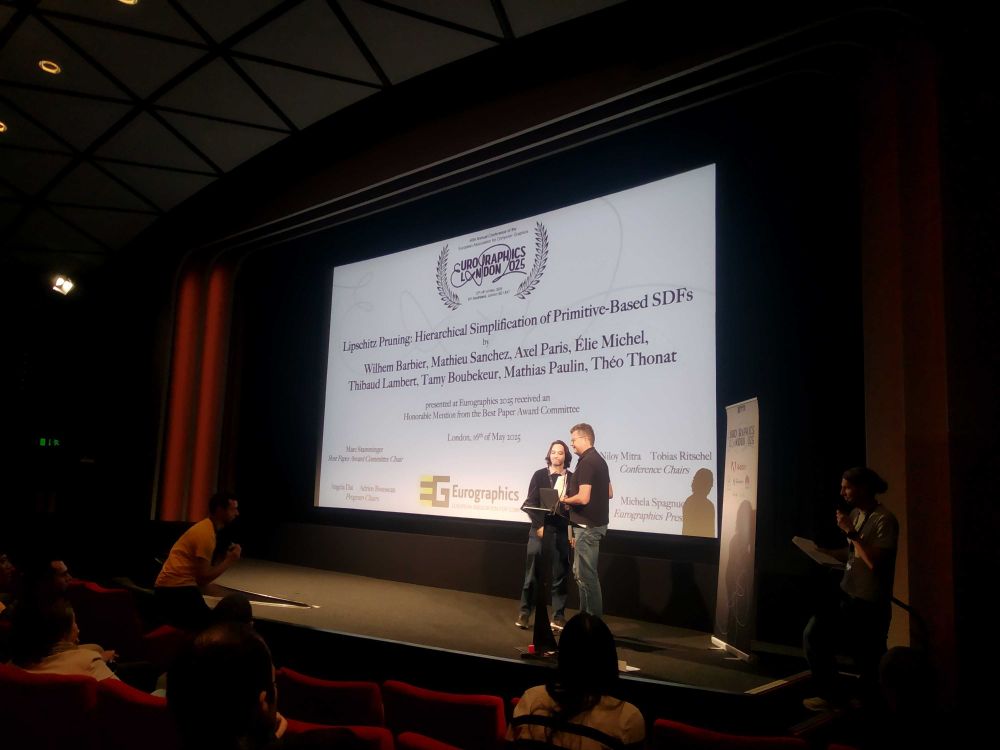Élie Michel
@elie-michel.bsky.social
420 followers
230 following
110 posts
Research Scientist at #Adobe. PhD in Computer Graphics. Author of #LearnWebGPU C++. Creative Coding. Indie game. VFX. Opinions are my own. Writes in 🇫🇷 🇺🇸.
https://portfolio.exppad.com
https://twitter.com/exppad
Posts
Media
Videos
Starter Packs
Élie Michel
@elie-michel.bsky.social
· Jun 4

Real Time Multiscale Rendering of Dense Dynamic Stackings
Dense dynamic aggregates of similar elements are frequent in natural phenomena and challenging to render under full real time constraints. The optimal representation to render them changes drastically...
perso.telecom-paristech.fr
Élie Michel
@elie-michel.bsky.social
· Jun 3
Élie Michel
@elie-michel.bsky.social
· Jun 3
Reposted by Élie Michel
Élie Michel
@elie-michel.bsky.social
· May 29
Élie Michel
@elie-michel.bsky.social
· May 10
Reposted by Élie Michel
Élie Michel
@elie-michel.bsky.social
· May 2
Élie Michel
@elie-michel.bsky.social
· May 2
Élie Michel
@elie-michel.bsky.social
· Apr 27
Élie Michel
@elie-michel.bsky.social
· Apr 27

Google falling short of important climate target, cites electricity needs of AI
Google, which has an ambitious plan to address climate change with cleaner operations, came nowhere close to its goals last year, according to the company’s annual Environmental Report Tuesday.
apnews.com
Élie Michel
@elie-michel.bsky.social
· Apr 27

![MOTIVATION
Graphical Processing Units (GPUs) are at the core of Computer Graphics research. These chips are critical for rendering images, processing geometric data, and training machine learning models. Yet, the production and disposal of GPUs emits CO2 and results in toxic e-waste [1].
METHOD
We surveyed 888 papers presented at SIGGRAPH (premier conference for computer graphics research), from 2018 to 2024, and systematically gathered GPU models cited in the text.
We then contextualize the hardware reported in papers with publicly available data of consumers’ hardware [2, 3].
REFERENCES
[1] CRAWFORD, KATE. The Atlas of AI: Power, Politics, and the Planetary Costs of Artificial Intelligence. Yale University Press, 2021.
[2] STEAM. Steam Hardware Survey. https://store.steampowered.com/hwsurvey
[3] BLENDER. Blender Open Data. https://opendata.blender.org](https://cdn.bsky.app/img/feed_thumbnail/plain/did:plc:gpta66q3ots5ia23kvfzpu5r/bafkreidqnyftshkcmtpzqlxsknnvcn34xszafururgdixddtcuzrmwloqq@jpeg)













